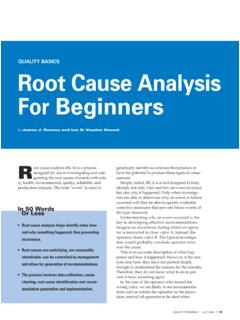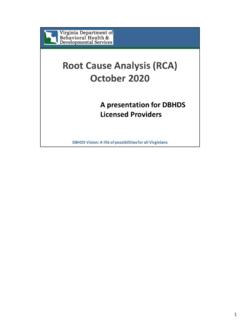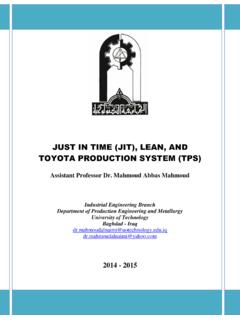Transcription of PDSA Cycle Template - CMS
1 Disclaimer: Use of this tool is not mandated by CMS, nor does its completion ensure regulatory compliance. Directions: Use this Plan-Do-Study-Act (PDSA) tool to plan and document your progress with tests of change conducted as part of chartered performance improvement projects (PIPs). While the charter will have clearly established the goals, scope, timing, milestones, and team roles and responsibilities for a project, the PIP team asked to carry out the project will need to determine how to complete the work. This tool should be completed by the project leader/manager/coordinator with review and input by the project team. Answer the first two questions below for your PIP. Then as you plan to test changes to meet your aim, answer question 3 below and plan, conduct, and document your PDSA cycles. Remember that a PIP will usually involve multiple PDSA cycles in order to achieve your aim.
2 Use as many forms as you need to track your PDSA cycles. Model for Improvement: Three questions for improvement 1. What are we trying to accomplish (aim)? State your aim (review your PIP charter and include your bold aim that will improve resident health outcomes and quality of care) 2. How will we know that change is an improvement (measures)? Describe the measureable outcome(s) you want to see 3. What change can we make that will result in an improvement? Define the processes currently in place; use process mapping or flow charting Identify opportunities for improvement that exist (look for causes of problems that have occurred see Guidance for Performing root Cause analysis with Performance Improvement Projects; or identify potential problems before they occur see Guidance for Performing Failure Mode Effects analysis with Performance Improvement Projects) (see root cause analysis tool): Points where breakdowns occur Work-a-rounds that have been developed Variation that occurs Duplicate or unnecessary steps Decide what you will change in the process.
3 Determine your intervention based on your analysis Identify better ways to do things that address the root causes of the problem Learn what has worked at other organizations (copy) Review the best available evidence for what works (literature, studies, experts, guidelines) Remember that solution doesn t have to be perfect the first time PDSA Cycle Template Disclaimer: Use of this tool is not mandated by CMS, nor does its completion ensure regulatory compliance. Plan What change are you testing with the PDSA Cycle (s)? What do you predict will happen and why? Who will be involved in this PDSA? ( , one staff member or resident, one shift?). Whenever feasible, it will be helpful to involve direct care staff. Plan a small test of change. How long will the change take to implement? What resources will they need? What data need to be collected? List your action steps along with person(s) responsible and time line.
4 Do Carry out the test on a small scale. Document observations, including any problems and unexpected findings. Collect data you identified as needed during the plan stage. Describe what actually happened when you ran the test. Disclaimer: Use of this tool is not mandated by CMS, nor does its completion ensure regulatory compliance. Study Study and analyze the data. Determine if the change resulted in the expected outcome. Were there implementation lessons? Summarize what was learned. Look for: unintended consequences, surprises, successes, failures. Describe the measured results and how they compared to the predictions. Act Based on what was learned from the test: Adapt modify the changes and repeat PDSA Cycle . Adopt consider expanding the changes in your organization to additional residents, staff, and units. Abandon change your approach and repeat PDSA Cycle .
5 Describe what modifications to the plan will be made for the next Cycle from what you learned.
















